Questing, endgame, and the unfolding of Legion’s story
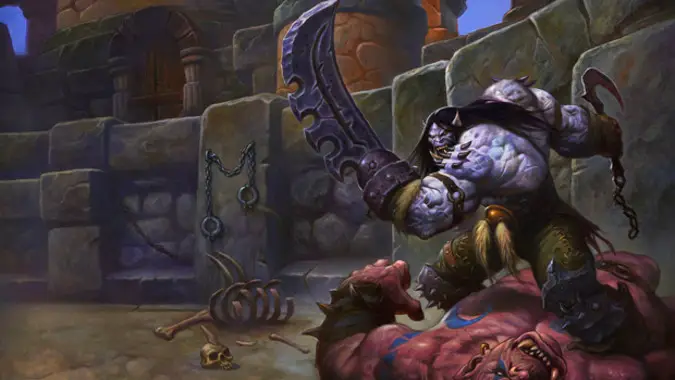
I’m one of those people who reads quest text. I don’t read it for its prose or anything, I just generally like to know why I’m doing something. I didn’t have the problem others have reported with Warlords of Draenor, in that I always knew why my character was there. I was there for two reasons: First, my people (Draenei) were being attacked by the Iron Horde and I wanted that second chance to save them. Having failed to prevent their near-extinction in my own timeline, this world was a chance for redemption and I took it gladly. Second, the Iron Horde would go to Azeroth if they weren’t stopped on Draenor.
I admit, the ease with which we chainsawed through the Warlords themselves strengthened that first point (which was really only applicable to Draenei characters) and weakened that second point. If we could take out Ner’zhul, Kargath and Blackhand so quickly one after another, as well as Azuka Bladefury’s death and the pushing back of Grommash Hellscream in Talador, it hardly seems like the Iron Horde was ever a really significant threat. So what if they came to Azeroth? Let them. Let them come and face the full might of the Horde and Alliance. If anything, they might help unite all the factions of Azeroth against them. It might be a good thing.
This was my biggest disconnect in Warlords. It wasn’t that I didn’t know why I was on Draenor. I knew why I was there. I just didn’t think the storytelling earned it.
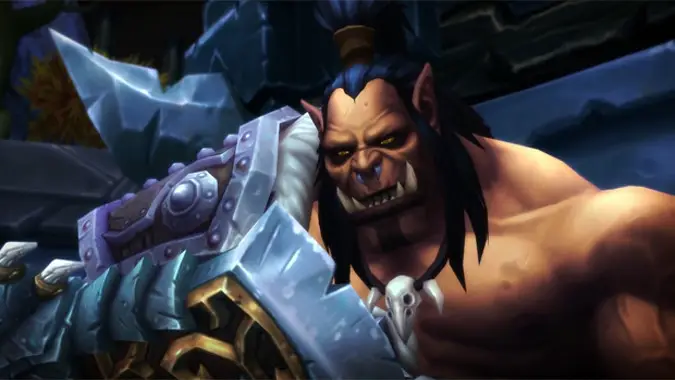
The problem with Draenor
When I started writing this post, I was inspired to do so by an interview with Tom Chilton and Ion Hazzikostas. Specifically one of the things they said about storytelling in Warlords and how they intended to change it in Legion.
Ion Hazzikostas: One thing I will say in general about lessons learned from Warlords of Draenor in terms of the storytelling, the level of an experience is not in question. We had a very clear compelling powerful story. In our raids and dungeons we kind of touched on where that story ended up. In terms of bridging the gap between those while we were telling that story, it was often in a way that felt disconnected from the world itself. Kind of fragmented. We’re really trying to much better integrate that storytelling in game so there’s a clear plotline that players can follow from start to finish.
Tom Chilton: We definitely want express it more through the max level content than we did in Warlords.
On the surface that’s a fantastic goal. But I think it emphasizes the wrong aspect, and doesn’t really touch upon where the Warlords story was excellent, and where it went wrong. The story in Warlords felt amazing while questing and leveling up. A vast majority of players I’ve spoken to raved about it. It felt cool and epic and interesting as we established our garrison, took care of the story of the starting zone, then moved out into Draenor to explore and counter the Iron Horde. You won victories but they set up future conflict. You saw the heroes and villains of the world, fought alongside some and against others. You were making a difference while drawing the focus of the Iron Horde away from your allies and more squarely against you and your garrison. The looming threat was always there.
Until you hit level 100.
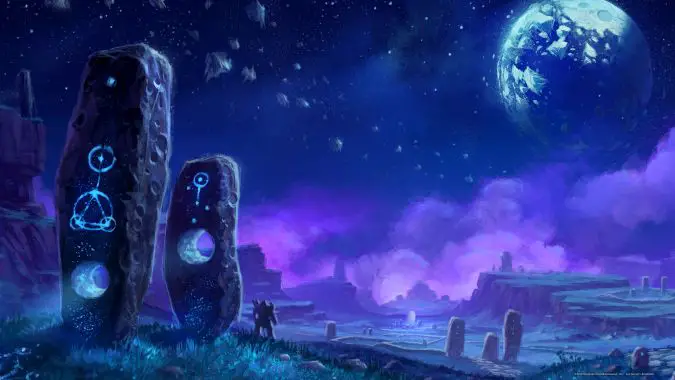 Shadowmoon Burial Grounds was the first sign that things weren’t going well for the story. You storm the bastion of the Shadowmoon Clan, do battle with their leaders, and face Ner’zhul. It’s a well designed five person fight. That’s not the problem. The problem is, you kill Ner’zhul. There he is, dead on the floor. You’re barely out of greens and you just killed one of the titular Warlords of the planet Draenor, the force that you supposedly had to stay behind on a hostile planet to stop from destroying Azeroth. It isn’t a major misstep. Ner’zhul was a villainous presence throughout Shadowmoon, he got plenty of screen time, but if you were Horde then all you got to see of one of the most infamous figures in orcish history was this one fight and a brief appearance in the Tanaan starting zone. It felt strange and disconnected and it really attenuated the menace of the Warlords themselves.
Shadowmoon Burial Grounds was the first sign that things weren’t going well for the story. You storm the bastion of the Shadowmoon Clan, do battle with their leaders, and face Ner’zhul. It’s a well designed five person fight. That’s not the problem. The problem is, you kill Ner’zhul. There he is, dead on the floor. You’re barely out of greens and you just killed one of the titular Warlords of the planet Draenor, the force that you supposedly had to stay behind on a hostile planet to stop from destroying Azeroth. It isn’t a major misstep. Ner’zhul was a villainous presence throughout Shadowmoon, he got plenty of screen time, but if you were Horde then all you got to see of one of the most infamous figures in orcish history was this one fight and a brief appearance in the Tanaan starting zone. It felt strange and disconnected and it really attenuated the menace of the Warlords themselves.
But that was nothing compared to having Kargath Bladefist as the first boss in Highmaul.
Fair or not, when you kill a boss in a raid matters. It’s one thing to kill Kargath at all — eventually we’re going to kill these people. It’s why we’re there. But to have him be the introductory fight cuts him off at the knees. It’s the raid boss equivalent of the Joker starting a villainous monologue only for Batman to punch him in the face mid-way through. Sure, there’s some instant gratification there, but it really stomps on the narrative. Kargath was the only Iron Horde presence in Highmaul. He deserved to be at least near the end, if not the actual end boss. Sure, Imperator Mar’gok is an important figure, the Sorcerer King of the Ogres, but he’s not on that big poster now is he? He’s not one of the people we were told is a threat to our world.
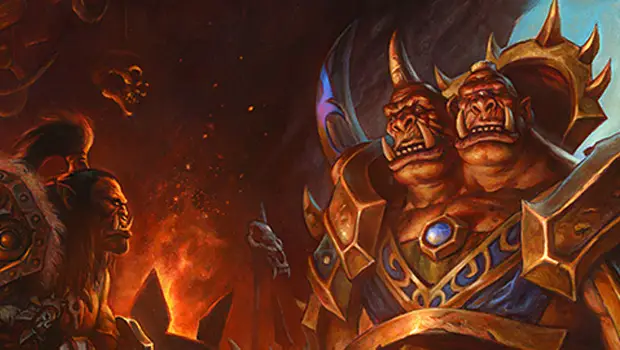
I find myself wondering if we would have been better served by losing to Kargath. Maybe we fight him and he stomps us and throws us in the slave pens, and the rest of Highmaul is us fighting our way out? It just feels anticlimactic to kill off one of the strongest Warlords so early.
This is followed by Blackrock Foundry. By itself, it’s a good raid. Maybe a little same-y with all the Orcs you end up fighting, but that’s to be expected from the Iron Horde. But the problem here is twofold. First, Blackhand is one of the most significant of the Warlords — in our timeline, he was the first Warchief of the Horde, and here he’s the head of the Iron Horde’s war industry. Cutting him down is a significant blow against the Iron Horde. All very fine. But doing so on the heels of taking out Ner’zhul and Kargath means that by the end of BRF you’ve killed three out of the six actual Warlords of the Iron Horde. (Gul’dan and Durotan don’t count, as neither was actually in the Iron Horde at that point.) Keep in mind that this is still within the first few months of the expansion. It’s hard to feel menaced.
Even that would be forgivable if not for what happens next. In the culmination of the Garrison Campaign, we kill another Warlord, Azuka Bladefury, and push the armies of the Iron Horde back into Tanaan. Essentially, we beat Grommash. Sure, he doesn’t fight you there, but that just makes it worse. The Warchief simply turns tail and retreats into the jungle.
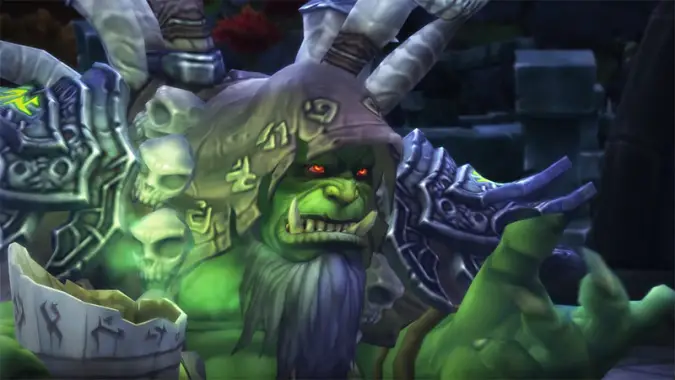
The Return of Gul’dan
This of course sets up the rise of Gul’dan as the master of the Iron Horde. And that’s a great turn, it’s a development I liked story wise. The problem here is this — essentially, there was a real opportunity for it to be made clear that Gul’dan’s rise to power is our fault, that we have to stay and see this through. But by putting so much of the story behind the Garrison Campaign quests and the legendary ring quests, you essentially restrict it. People see it as they progress if they progress, and if not, whole chunks of the story are missing or not as well presented.
And it’s hard to ignore the fact that in story, we’re never told why we didn’t just kill Gul’dan when we had him trapped and helpless at our mercy. We couldn’t do that to Teron’gor or Cho’gall because they were immaterial phantoms, but Gul’dan is clearly completely physical and visible when we first see him. Something as simple as making him a ghost we couldn’t touch would have gone a long way towards explaining why I didn’t immediately stab him with every pointy object I could find.
Essentially, looking over the quote from Ion Hazzikostas and Tom Chilton, I find myself in slight disagreement. Yes, Warlords had a compelling story. The problem isn’t just that it wasn’t told enough at endgame, though. The problem is that it was told in a way that contradicted itself. The Iron Horde is a menace to Azeroth … that we pretty much nearly destroyed almost as soon as we were ready to fight it. There are no real reversals. The only defeat we suffer is the death of Maraad (that Horde doesn’t really care about) or Orgrim Doomhammer (that Alliance doesn’t care about and that even Horde was left with “So what, he wasn’t even on our side until the very end,” so it feels absolutely flat). We kill four of the Warlords of the Iron Horde in quick succession while the Warchief preens dramatically on his mount and then skulks back to Tanaan to be deposed by an unstoppable evil warlock … that we first met as a battery and who we seemed able to easily kill, whose entire plan seems to have hinged on us.
Instead of feeling like we were serving an important role in defending our world by coming to Draenor, it could be argued that we made things worse by freeing Gul’dan, and that without us the Warlords would have invaded Azeroth and easily gotten their butts kicked considering how fast we scythed through their ranks.
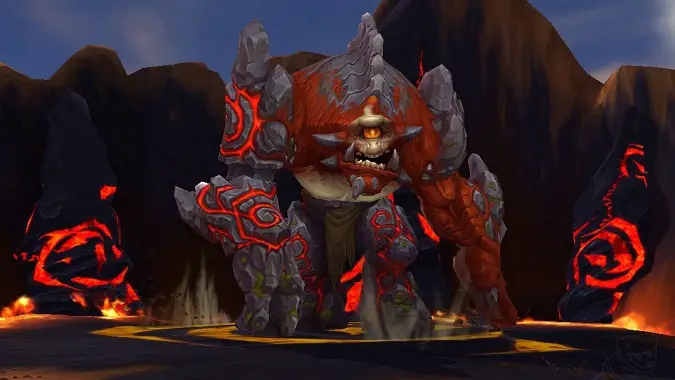
What would have been
The thing is, this sounds like there wasn’t anything good in Warlords or its storytelling, and that’s absolutely not the case. These were small errors that compounded each other, and they could have been avoided. With the benefit of hindsight, what could we have changed to have avoided this feeling of contradictory message?
- Keep the Warlords alive longer. Don’t have Ner’zhul die in Shadowmoon Burial Grounds, or Kargath in Highmaul. If Kargath is even going to be a boss in Highmaul, let him be one of the last bosses instead of the first one everyone fights. Kargath is the Iron Horde presence in Highmaul, and the Highmaul ogres should have things to prove to him, not the other way around.
- Don’t put the Garrison Campaign behind a weekly gate. I understand wanting to keep players from burning through it too quickly, but putting it behind that gate meant that people forgot what was going on from week to week, it kept the quests from naturally flowing from one to another. The way patch 5.1 handled the standalone quests should have been emulated here, unlocking the quests every few days as you progressed through the reputation. Replace rep with a progress mechanic, make it invisible.
- Expand the Garrison Campaign significantly. There should have been about twice as much story here.
- Consider holding the Warlords in reserve for the final raid. Having that raid be a siege on the Warlords themselves gives it more gravitas. Imagine if everyone had turned on Grommash, and we had to fight our way through fel corrupted Azuka, Blackhand and Kargath on our way to Archimonde?
In general, Warlords almost worked. These cumulative mistakes could have been avoided, and if they had, the incredible storytelling momentum earned through leveling could have carried the expansion through to a very satisfying climax. 6.2 did a lot to make a more interesting story for Warlords but it felt like a very sharp left turn after a significantly rocky patch of road, and it’s this, more than a lack of actual storytelling in endgame, that really hurt the expansion in my opinion.
It’s not that the players couldn’t follow a fragmented plot line. It’s that the fragmented plot line didn’t follow itself. I feel like Legion is well poised to do better, with an actual sense of real stakes (the biggest demonic invasion in Azeroth’s history should certainly actually feel like a real threat) to keep us motivated, and I’m excited to watch it unfold.
Please consider supporting our Patreon!
Join the Discussion
Blizzard Watch is a safe space for all readers. By leaving comments on this site you agree to follow our commenting and community guidelines.
 @MatthewWRossi
@MatthewWRossi



